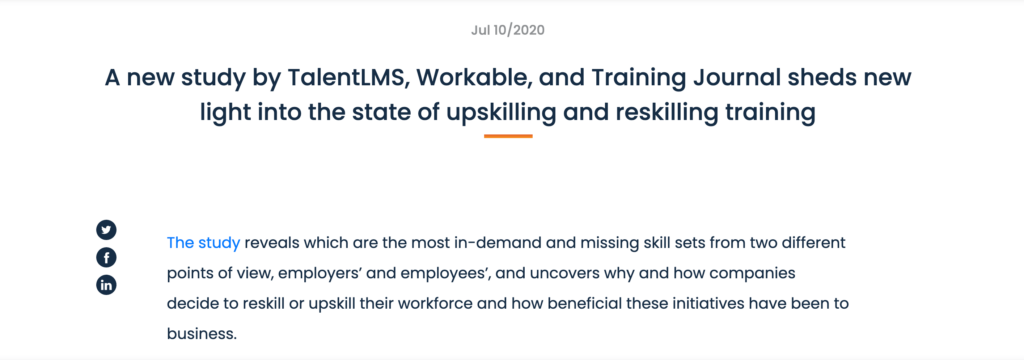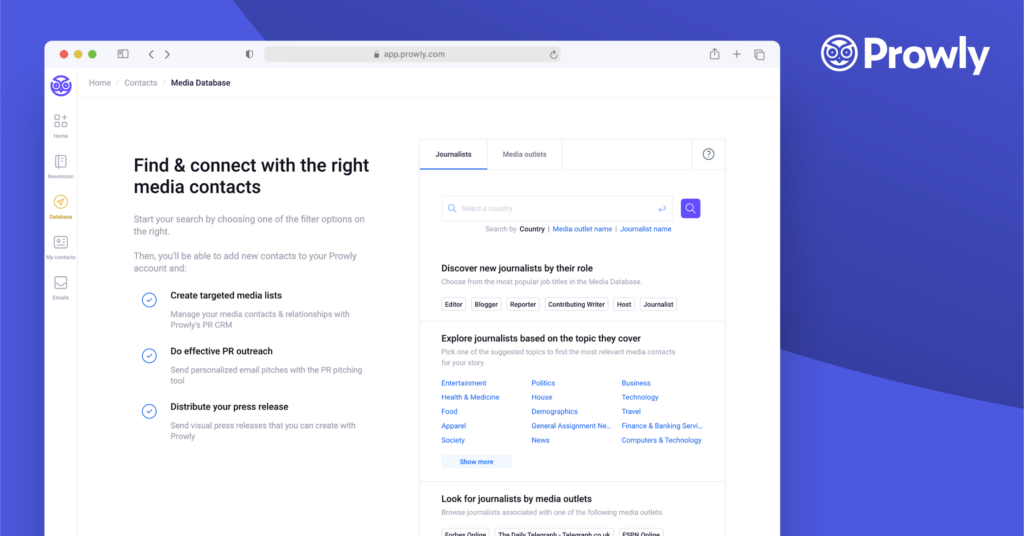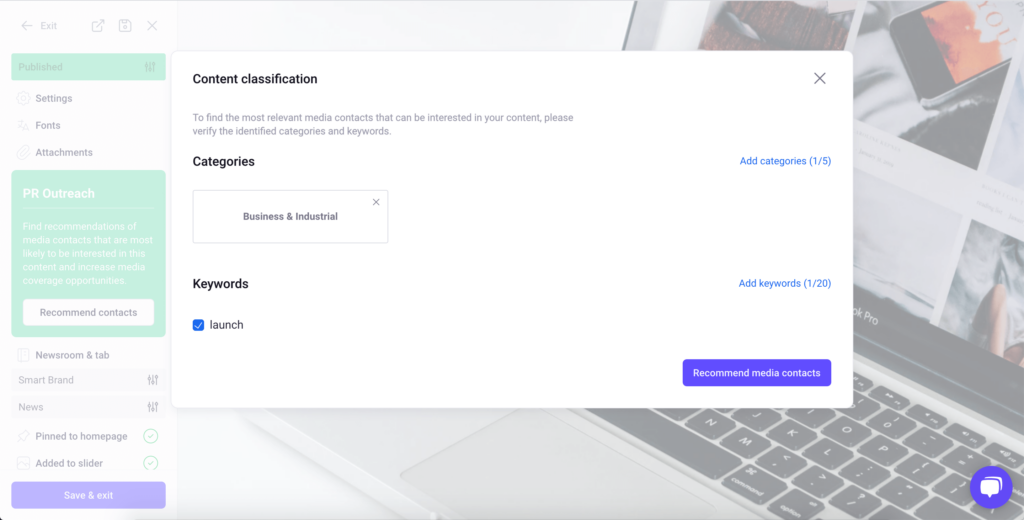By and large, SEO press releases are shunned by the SEO community. Conversely, public relations professionals rely heavily upon them.
So why is it that the exact same tactic is spurned by many SEOs while being embraced by PR firms?
The sentiment throughout the SEO community is that SEO press releases are dead. Are press releases really dead, or could it be that they’re being utilized incorrectly?
Let’s find out.
- The abridged history of press releases for SEO
- What are the two most common types of press releases?
- 6 ways to effectively leverage SEO press releases
- What to keep in mind when creating a great SEO press release
The abridged history of press releases for SEO
You can’t really say whether SEO press releases are dead without the backstory as to why this is even a topic of discussion.
Press releases used to be an effective tactic to build links that would directly improve your organic rankings.
SEO companies figured this out pretty quickly and began to syndicate low-quality press releases across hundreds of websites, using keywords as anchor texts.
This worked up until about 2012, but like many other questionable link building tactics of the time, it landed on Google's radar, getting attention from the previous Head of Webspam, Matt Cutts. Fast-forward 6 years and his replacement John Mueller is still fielding questions on the topic.
Here’s what Google’s John Mueller had to say about the issue:
We try to ignore links from things like press releases because we know, in general, companies put the press releases out themselves. So any links in there are essentially placed by themselves.
But if these links happen, and they're out there, it's not something you need to worry about because you can't really take them all back. I just wouldn't rely on kind of press releases as a strategy for building up links for a website because like I said we do ignore most of those.
Now, before you stop reading now and declare them dead once and for all, you should know that from time to time, what Google says is not always what Google does.
Somewhere between what they say and what SEOs believe is the actual truth... Press releases seem to fall into that grey area.
Today, we are going to discuss some practical applications for press releases and targeted media outreach, starting with a look at the difference between the two.
What are the two most common types of press releases?
1. Newsworthy announcements to gain targeted media placements
Targeted PR outreach is a process of creating a newsworthy press release, building a targeted list of contacts at select publications, and pitching those contacts to cover or share your story.
This type of PR has been working since well before the digital age and so long as people have real news to share, I can’t see it going away anytime soon.
Sometimes this results in the syndication of the press release you have written, and other times it leads to media coverage instead.

For the sake of clarity, according to At Internet:
The term media coverage is used to refer to all blog articles, RSS feeds, video content, or other types of digital content (produced by individuals or organizations other than your own company) where your brand, products, or services are discussed or shown.
Media coverage through targeted outreach is a tactic used by both PR professionals (typically via PR outreach software like Prowly), and outreach link building agencies to secure quality links for your company.

2. Press releases for SEO purposes
SEO press releases, as the name implies, are releases created and published to achieve an underlying SEO goal.
Most often, this type of press release is promoted using a syndication service to push the release out to numerous websites.
This doesn’t mean SEO press releases aren't newsworthy. In fact, even big brands will sometimes leverage press release syndication services to maximize exposure. It also doesn’t mean that you can’t promote your SEO press release to a targeted list of media contacts, it is just less often the case.
In order to have success with either strategy, you need to start by defining your desired outcome.
Once you know what you want to achieve, finding the right tactic is pretty straightforward.
So before you go any further, ask yourself: What outcome am I hoping for and which goal am I trying to achieve with this press release?
Which strategy aligns with your goals?
Have you ever heard the saying You Don’t Know What You Don’t Know?
In this case, if you aren’t sure how to effectively use a press release, you could be missing out on a cost-effective opportunity to increase your visibility or protect your brand name.
So let's take a look at how you can use SEO press releases.
6 ways to effectively leverage SEO press releases
1. Press releases for local SEO
Press releases are a good way to build citations. A citation is the listing of your business name, address, and phone number (NAP). Each site that picks up your press release creates a new citation, which is a major ranking factor for local SEO.
There are two types of citations: Structured and Unstructured.
- A structured citation is your business listed on a formal online database like the Yellow Pages or Yelp, and the NAP is always mentioned.
- An unstructured citation is an online reference to your business on informal platforms like press releases, blogs, or reviews; your full NAP isn’t always listed.
Citations are not the only benefit of a local SEO press release. It can also be used to generate Geo-relevant links to pages other than your website.
This can be done by including links to your Google My Business Profile or other social media profiles, as well as through embedding of your Google Places Map.
It would take an article (or three) to cover everything you can do to a press release for maximum local SEO benefit, but if you are in that space, it is certainly worth researching further.
2. SEO press releases to build or protect your online reputation
A study by Bright Local indicated that 82% of consumers read online reviews for local businesses, with 52% of 18-54-year-olds saying they ‘always’ read reviews. Now imagine for a moment that one of the first things potential customers saw about your business was a bad review, even if it was false...
In order to keep negative information off of the first page, reputation management specialists have been using SEO press releases, social media profiles, and other authoritative sites to protect the first few pages of the search results for brand searches.
This is known as barnacle SEO, which is the art of placing content on third-party sites with high authority so that you can rank your content more quickly or can occupy multiple spots for the same keywords.
While the original uses of barnacle SEO are outdated and ineffective, it is still a great way to claim valuable first-page results for your company name or even the names of your executive team.
If you haven’t recently searched for your company name or even your own name, I would suggest doing so sooner than later, to make sure you know what kind of first impression you are making.
3. SEO press releases to promote content discovery
Content discovery happens by search engines and humans alike. Press releases can help you increase the rate at which new content is found by both.
First, SEO press releases can help you get new content indexed faster. Despite all of its complexities, the process of going from non-existent to ranking can be broken down into a few simple stages.
- Content is produced and published.
- Google crawls and indexes the new page.
- The keyword(s) are given an initial ranking in Google.
- Links are built to increase authority and improve rankings.
In this instance, an SEO press release can be helpful with the second stage - getting your pages indexed by Google.
If your link is featured on a reputable site, chances are Google is crawling their site more frequently than your site. This is especially true for news publications. Google will see your link more quickly, which often helps your new page get indexed faster.
Link building can serve many purposes, one of the most fundamental being the ability to help Google find and index pages.
Check how you can step up your PR link building game with Prowly →
Secondly, SEO press releases can help you gain exposure for new content sooner. When it comes to promoting content, you have two options.
- Build an audience, then promote your content to them
- Leverage the existing audience of other sites to promote your content
Both are valuable when done correctly. That second option is why guest posting became so popular in the first place. You create and feature content to a pre-built audience for instant exposure.
A press release, shared to the right websites, can generate exposure and referral traffic, much like guest posting.
Where this strategy often falls short is in selecting the places to publish. Taking the time to build a quality, targeted media list is very important.
With Prowly, you can access a Media Database with over a million contacts, and use smart recommendations based on the contents of your press releases. This way, you’ll always pitch relevant people that are likely to be interested in your story.

Conversely, if you use a standard PR syndication service, you are going to be one of many releases issued every day, and the likelihood of being prominently displayed to a site’s audience is low.
As discussed, that type of release can be good for reputation management, or even to target long-tail keywords, but isn’t typically effective at generating referral traffic.
4. Ranking press releases for long-tail keywords
Since Barnacle SEO isn’t as powerful as it once was, the chances of ranking a press release for high-volume, competitive keywords are pretty slim.
However, an optimized press release can rank for less competitive and long-tail keywords, giving you instant exposure on Google, even if for just a few days.
To prove this, we ran a quick test of concept.
A couple of weeks ago, we created a blog post titled “What are Niche Edits?”
We then used a low-level PR syndication service to push out a short press release titled: “Top Rated Link Building Agency Releases New Niche Edit Service”.
We targeted the keywords “what are niche edits” and “niche edits link building service” within the press release.
In about 24 hours, the press release showed up around #5 for both keywords and lasted for about 7 days.
Once that fell out of the search results, our blog post showed up around position #5 for the keyword “what are niche edits”. This is of course a low competition term, but it does prove the concept.
The most practical application for long-tail keyword-focused press releases are likely for location-based keywords as part of a local SEO strategy but could extend to almost any long-tail keywords with limited competition.
5. Using SEO press releases to reach a pre-built audience
SEO press releases are a great way to not only reach your audience, but they’re also a great way to reach a pre-built audience within your same niche.
Media outlets like local news stations, newspapers/magazines, and social media influencers already have a pre-built audience, which can provide you with great exposure.
As a practical example, imagine you are opening a cake shop in Nashville, TN. You reach out to WSMV, The Tennessean, and WKRN and get your grand opening announcement featured on their site. This is both a great link and is likely to send real people to your establishment on opening day. SEO aside, that is a win no matter how you slice it.
Just remember, the bigger their audience, the better your press release will have to be to get their attention though, so make sure you know exactly how to write an effective press release.
6. SEO press releases to diversify anchor texts
An over-optimized anchor text profile can lead to your site being penalized. If you are issuing press releases with keywords as anchor text, you are really rolling the dice.
According to a Semrush study, sponsored posts, guest posts, and press releases were the leading culprits of link-based website penalties.
The fascinating part is that almost 50% of the penalty cases found during their study had used “money” (a.k.a. Keyword-based) anchors.
This means that it is imperative that your press release contains branded or naked URL anchor texts, not keyword-optimized ones.
That holds true not just for SEO press releases, but for other types of link building as well. Take advantage of press releases to build branded anchor text links to your site, which will help your overall anchor text profile.
Now that you know how to use press releases, let's look at a few tips for creating a great press release.
💡If you're seeking more exposure for your press release, explore these 10 ideas on how to effectively promote a press release.
What to keep in mind when creating a great SEO press release
In order to engage journalists and get your story or announcement published, you have to know how to write a press release properly.
Just think about how many potential stories and pitches come across the desks of journalists every day… They see a lot, and the majority of them aren’t worth their time and end up getting tossed out.
That reason alone is why it’s so important to make sure your press release stands out from the “junk.”
Sure, the format of your press release may be traditional (that just makes the content readable)… But the actual content within the press release should be anything but basic!
Your press release needs to be attention-grabbing, look professional, and easily accessible to journalists looking for stories.
Here are a few tips to keep in mind when creating your press release:
- Write an attention-grabbing press release headline
- Include quotes
- Never forget your contact information
- Keep it short, sweet, and straight to the point
- Time it well
- Be straight to the point within your first paragraph
- Provide links to “learn more”
- Ensure there are no grammatical errors
These are basic necessities of press releases, but sadly, they are often omitted, resulting in some pretty poorly written releases.
To help you get the most from your next press release, here are some excellent resources you should check out before issuing your next press release:
- How to Write a Press Release - The Ultimate Guide
- 13 Free Press Release Templates
- How to Send a Press Release Email to Journalists
Pulling it all together
In closing, to answer the burning question of whether or not SEO press releases are still relevant today, yes, they are.
However, you must understand that press releases are just one part of the equation. You must have a cohesive strategy that combines web design, content marketing, content promotion, and media outreach into a well-oiled traffic-generating machine.
Remember, it all starts with a clear goal, so if you don’t have one in place, now’s the time to change that.
Cover photo by Suzy Hazelwood

